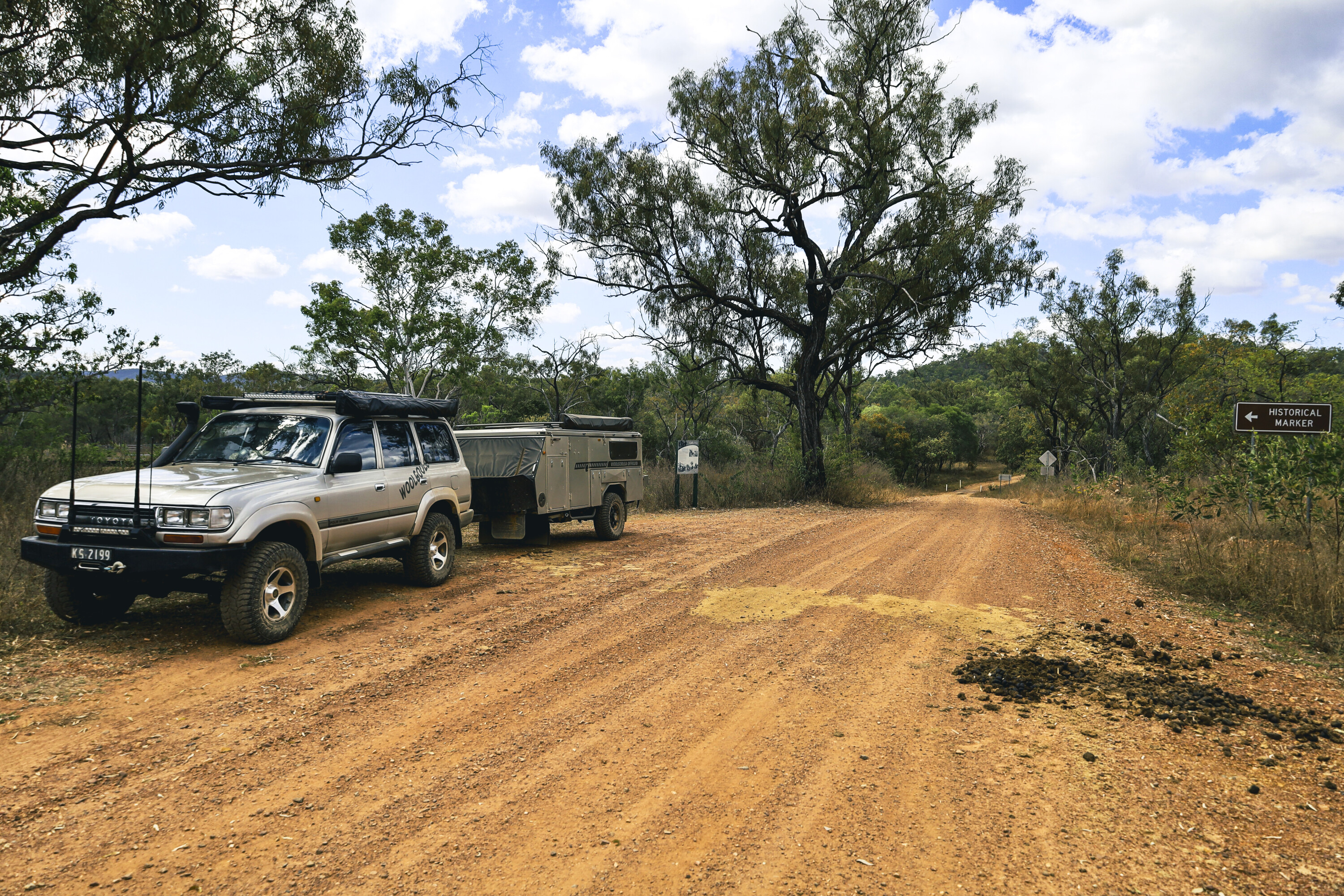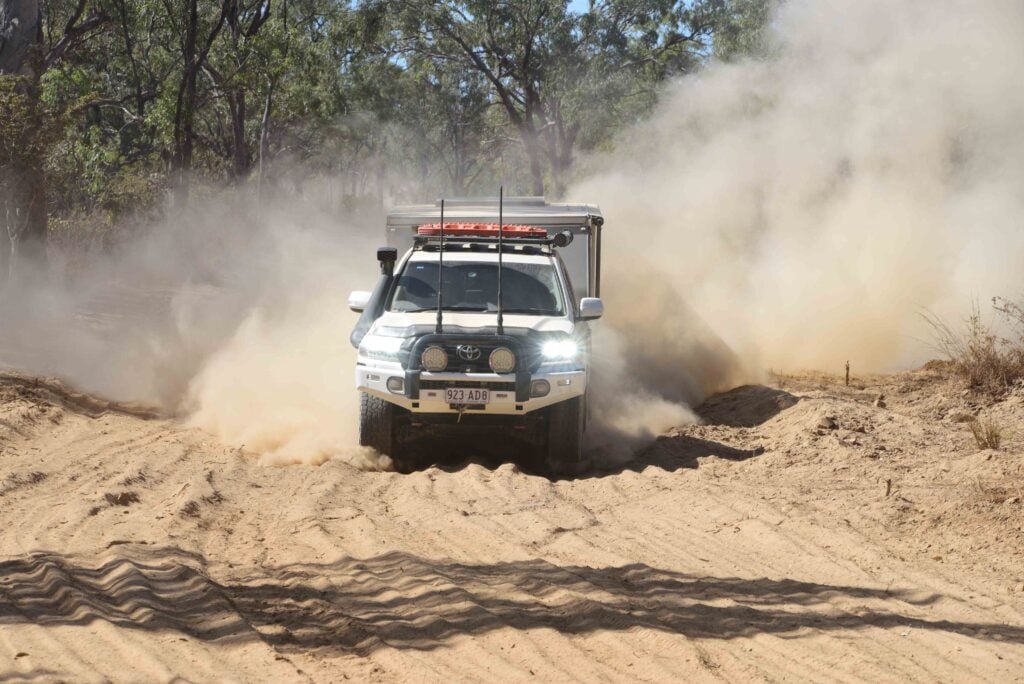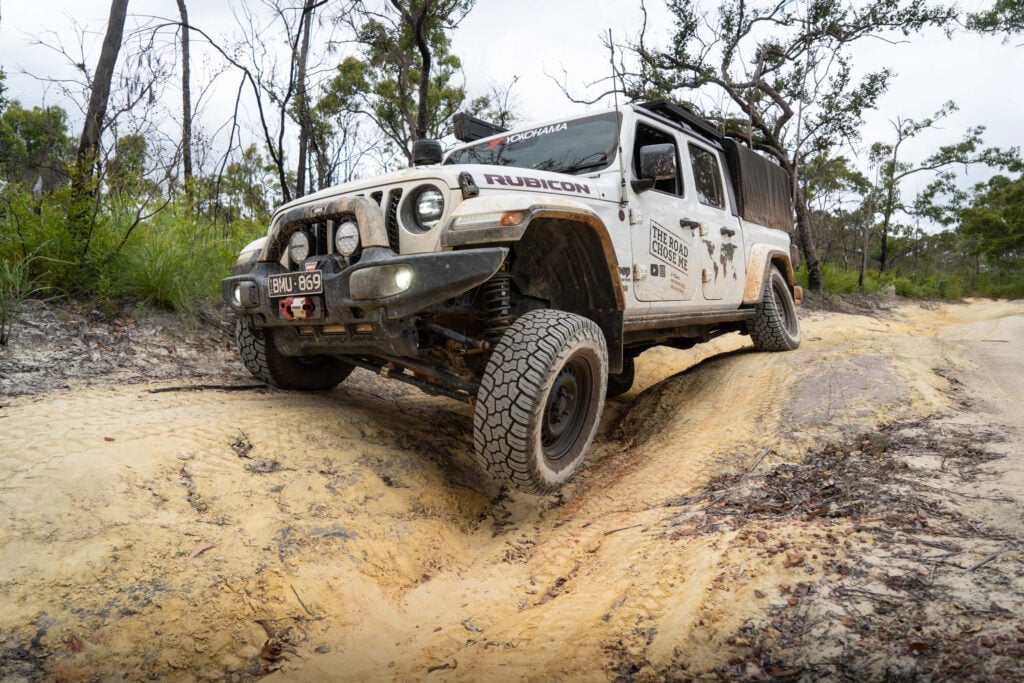Right from the get-go I knew my trip through the Herberton area in Far North Queensland would reveal some unbelievable history and hidden gems across an area I’ve never previously explored.
Starting off at Herberton, 90 minutes southwest of Cairns, I was immediately drawn to the Historic Village Herberton, a place that has to be seen to be believed. There is 6.5ha to explore, covering historical buildings, working machinery, antique cars and trucks, a huge array of mining gear plus a main street where buildings are period correct with live demonstrations. My advice: be prepared to spend the whole day here.
The village opened in 1973 but closed in 2003 due to rising costs. A few years later a couple drove past and made enquiries on the failing village, and ended up buying it. It re-opened in 2009 with restoration starting on the 30 buildings already on site, and since then another 20 period-style buildings have been added.
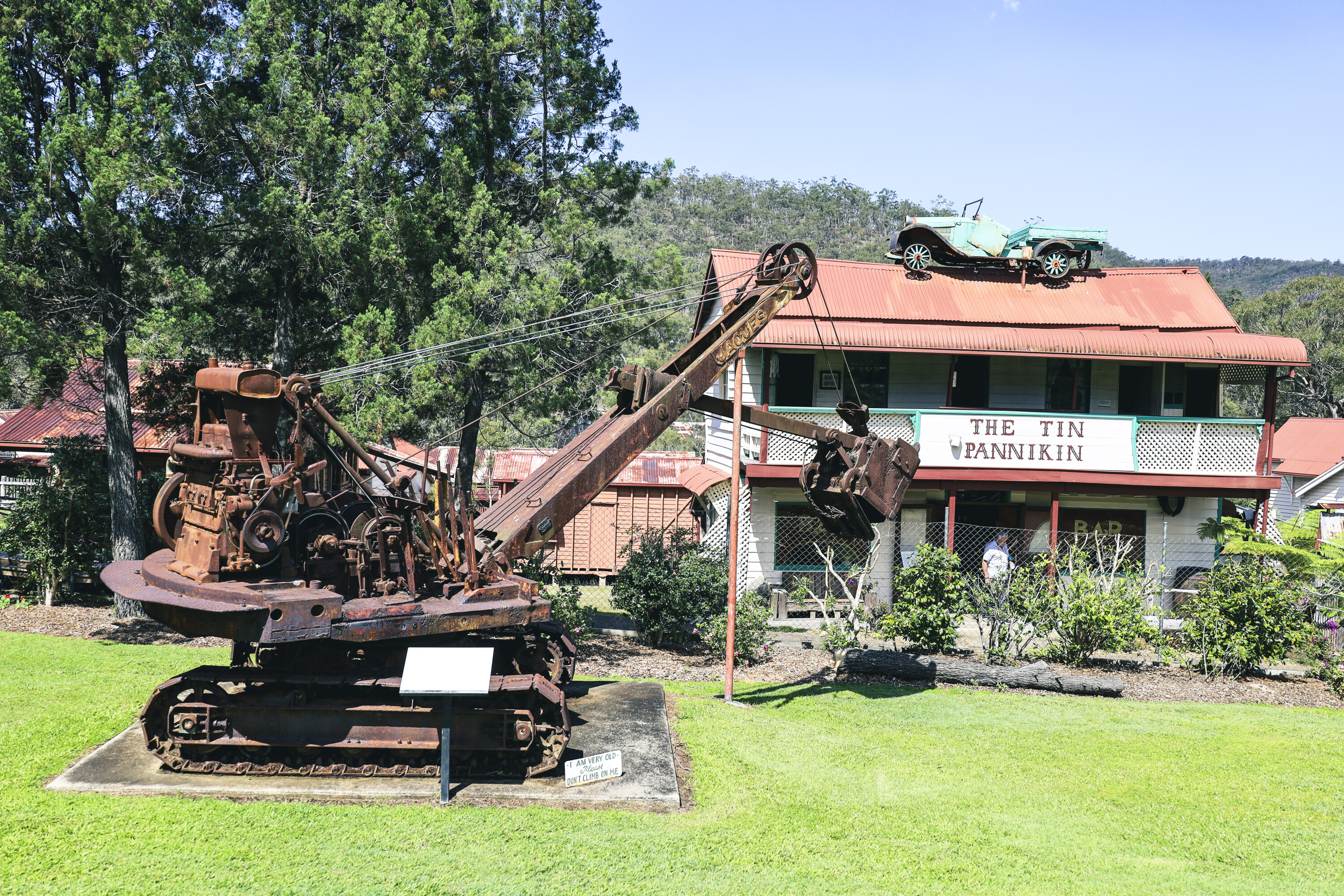
There is an old tin mine on the property and some of the sheds and huts near here date back to 1880. The original mine head over the shaft remains in situ to this day.
Wandering around the property offers the opportunity to examine more than 150,000 exhibits, both inside and outside of the buildings, including toys, chemist potions, machines, garages, shop paraphernalia, tractors and a huge working saw mill that was relocated here from the bush.
The centrepiece of the village is Elderslie House, which used to overlook a huge tin mining operation in Herberton, and has now been moved into the village and been meticulously restored. Originally built by Queensland miner and entrepreneur Mr John Newell in 1881 for his wife, it stood atop a hill in the heart of town back when Herberton was regarded as the centre of the Atherton Tablelands.
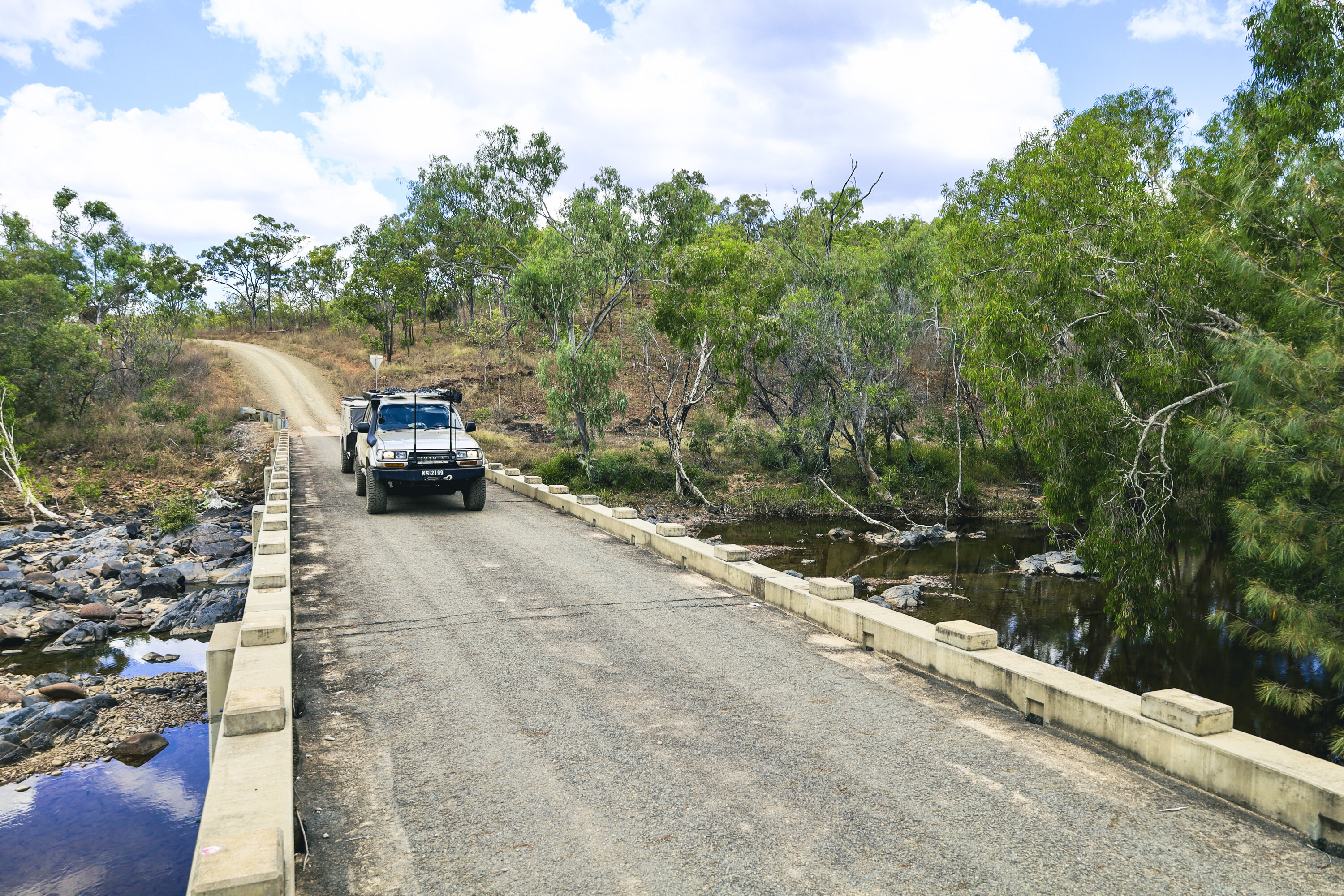
Herberton was known as the village in the hills when tin was found here in 1880 by John Newell and Willie Jack. A few years later they opened up a merchant store in town, and later opened another 12 stores on the tablelands and on the coast.
Up town, the Herberton mining museum has been built where the first payable tin was found in Herberton, and you can walk several mining trails here and view the old mine shafts – namely the Gully Shaft, Eastern Shaft and No. 3 Shaft. Take a wander around the old machinery and check out the old camps, while inside the building is a massive collection of mining memorabilia and minerals.
Even the main street of Herberton is like a step back in time with the verandahs of century old buildings built right to the street’s edge. There are 60 buildings that can be visited on a self-guided tour, including a spy museum with rare cameras on display.

I found it difficult to drag myself away from Herberton but the push was on to head 30km further west towards Irvinebank, a fascinating and historic tin-mining town that remains largely untouched.
I headed straight for Loudoun House which is now the local museum. It was built by John Moffat when he discovered tin here in 1882. He built the house to overlook his mining operations which included a smelter, a mill and a dozen stampers, all within earshot.
Moffat was a religious man and was well respected within the area, and when he realised that the mine was no longer viable he refunded £20,000 pounds back to investors in good faith.
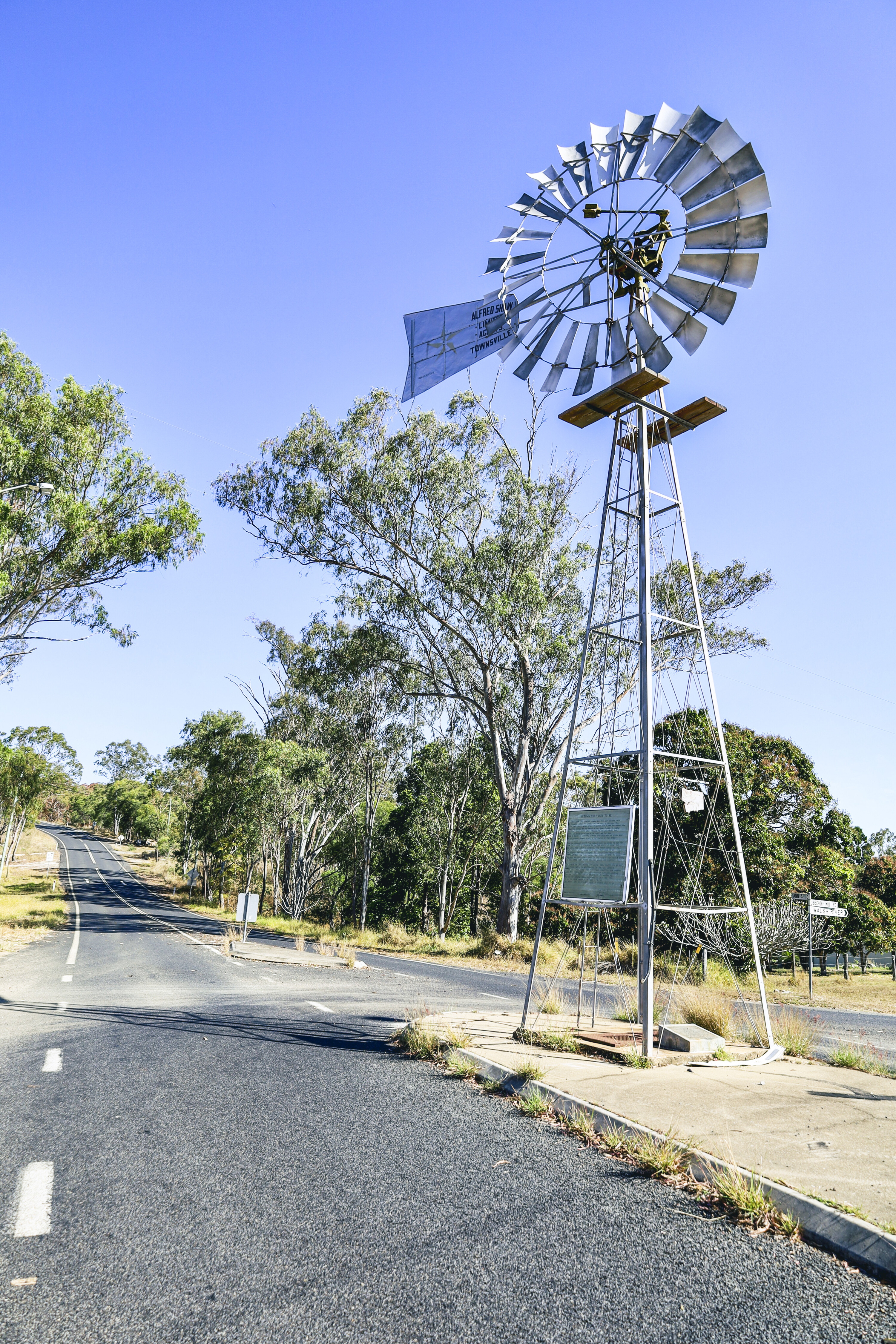
Today Loudoun House is packed with mining information, photos and town memorabilia, and from its verandah you can see the massive tailings dam of the original tin mine.
This was drained back in 2010 and more than $20 million dollars of tin was recovered, according to the museum’s curator. Irvinebank has other handsome buildings built at the turn of the century including the National Bank, the School of Arts and the Treatment Works (originally the Loudoun Mill), and all are heritage listed and well preserved.
To the north of town the Vulcan Mine and mill are well worth exploring. The mine was once regarded as the deepest tin mine in Australia and the most successful one time during its 40 year lifespan. The massive mine head can still be found, and by following a track up the hill I found the deep shafts and could spot the tunnels heading off the main shaft.
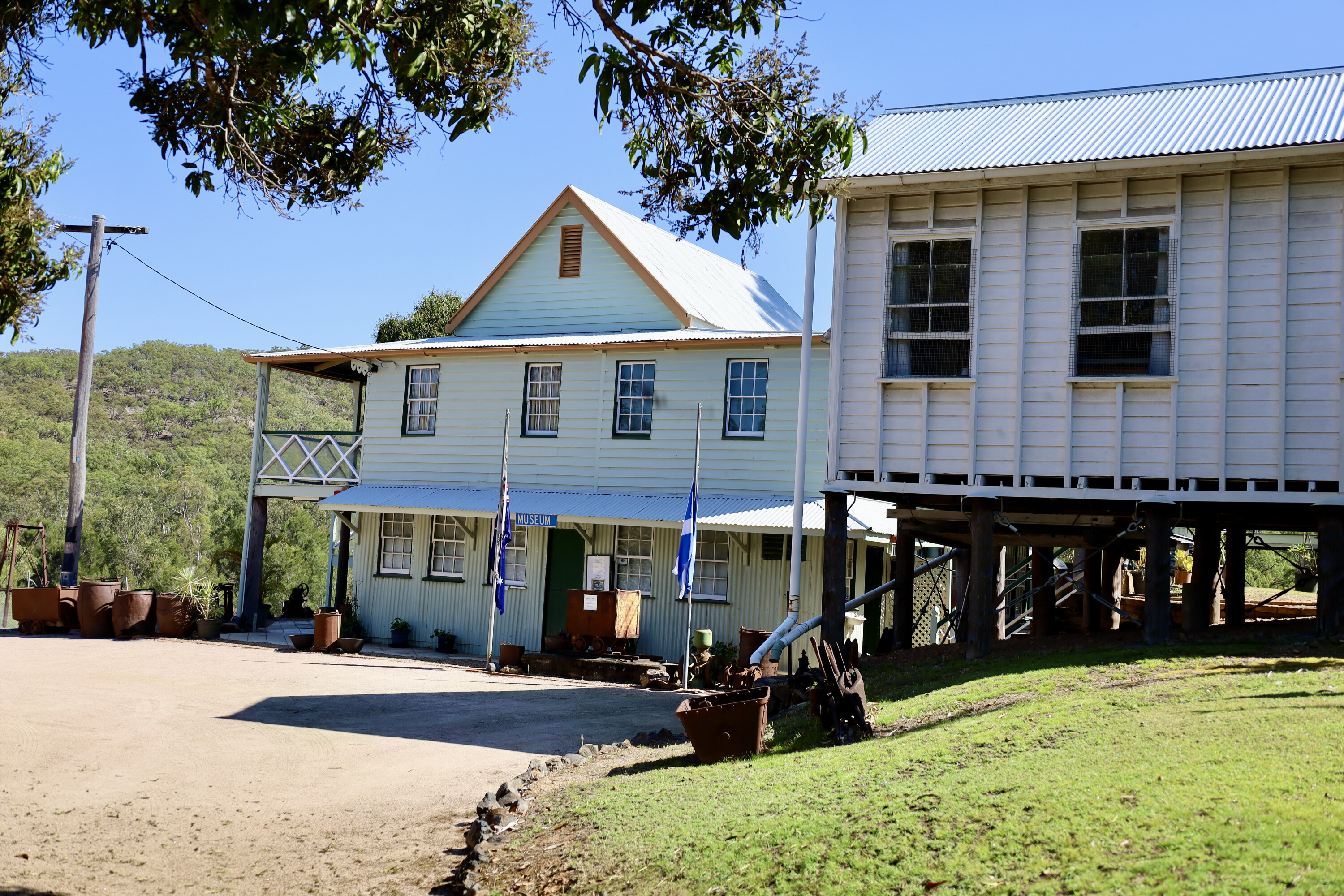
Irvinebank also had a small-gauge tramway that was built in 1907 and it carried passengers and tin ingots north towards Chillagoe. At the time Queensland Railways had built 3ft 6in lines, but the privately owned Irvinebank line was a 2ft gauge.
Leaving Irvinebank along the Petford Road the next stop was the old township site of Montalbion, where a huge amount of silver was found in 1885, as well as copper and gold. A small town grew here over time but eventually the primitive lifestyle and remoteness resulted in the closure of both town and mine. All that remains these days is a sign and a dam that was used for the town’s water supply.
At Emuford, a further 30km west, legendary explorer and prospector James Mulligan was on a hunt for food when he stumbled across an emu’s nest with four eggs in it, and so he named Emu Creek. Tin was found here in 1881 but it wasn’t until 1911 that a commercial operation was built, and this was an ongoing operation up until 1985.
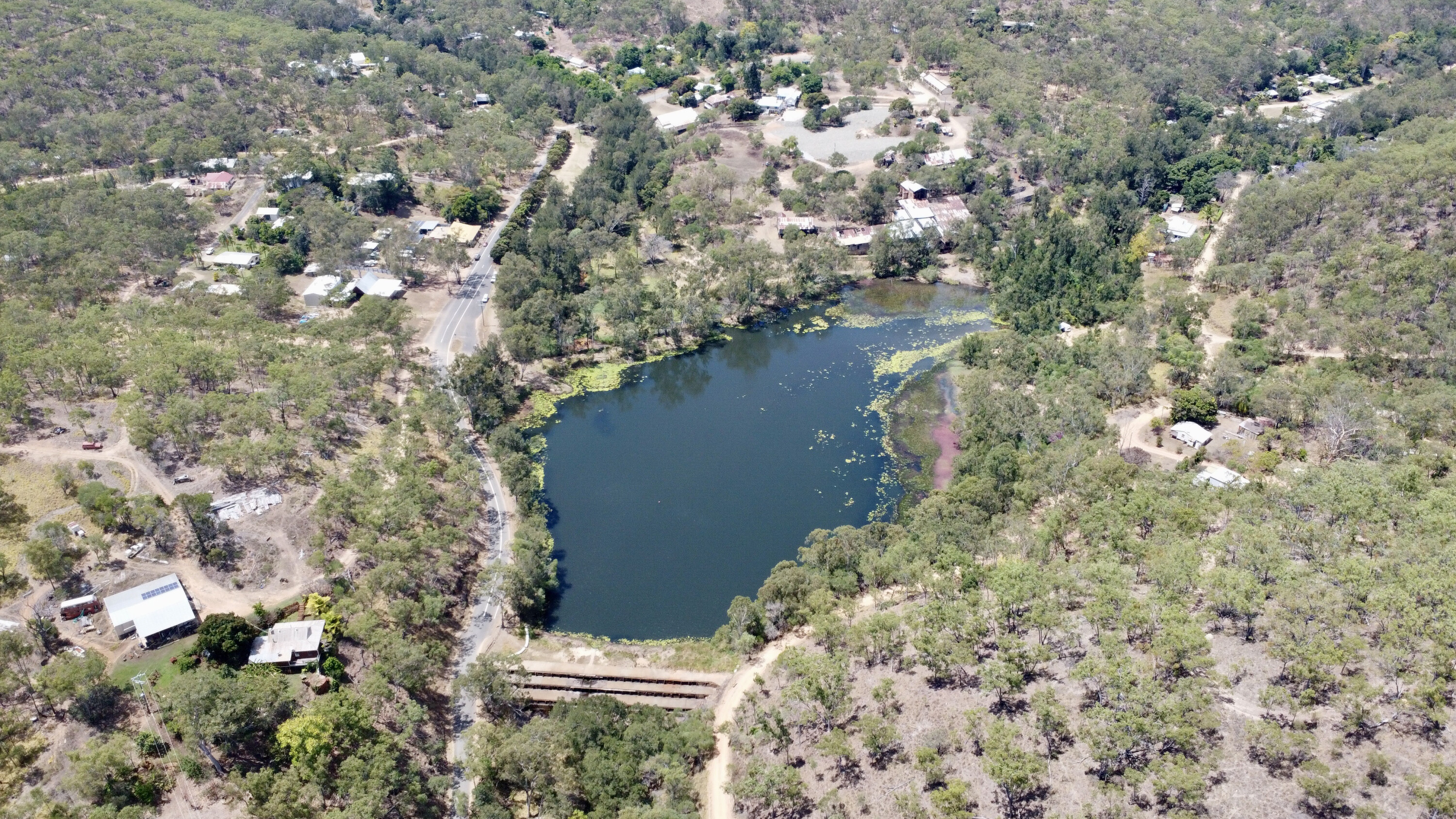
The town site is situated beside Emu Creek, but there’s nothing left of it bar concrete slabs and a few crumbling bricks.
The main mine site is on the western side of the creek and the sheds and stamper are still intact; it is regarded as Queensland’s most intact example of a historical tin mine battery site. The landscape out here is harsh yet beautiful, and the Petford Road follows the Atherton Ranges all the way to Petford.
Just a locality now, Petford was once an important siding on the original rail line from Chillagoe to Cairns that was built in 1900. Today, other than a little siding shack, there’s nothing left of the original town.
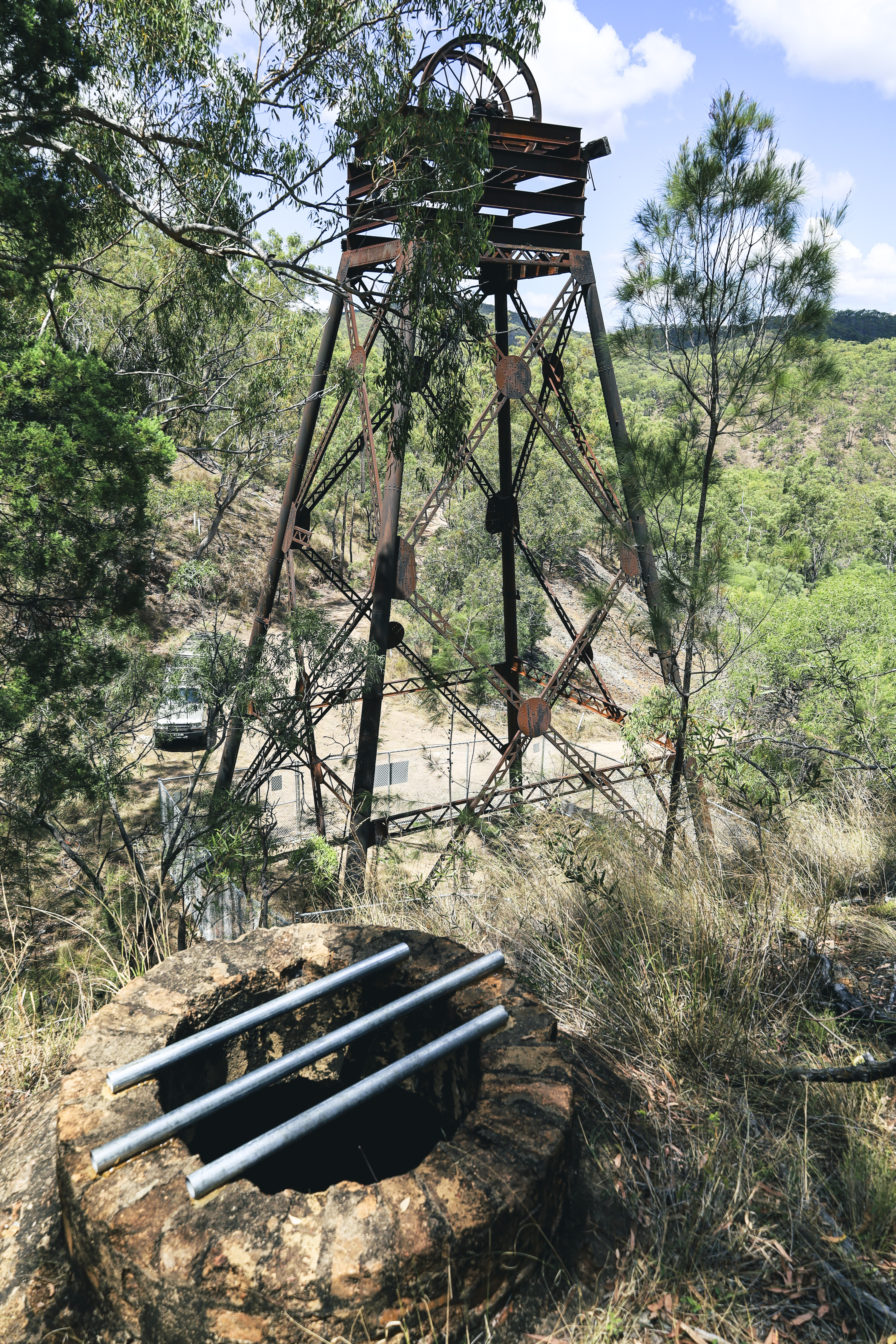
The track from Herberton to Petford was the original Cobb & Co route between 1888 and 1904.
A connection to the outside world, when the driver would sound his bugle to announce the coach’s arrival, it would generate great interest by the town folk. This was mail service number 201, and it carried nearly anything to everyone, covering all the small communities along the way on its weekly 270km run.
This Herberton adventure is one of the most amazing history trails I have covered anywhere in Queensland. If you have a few days up your sleeve while exploring FNQ, I highly recommend the Herberton to Petford drive.
Fast facts
Where:
The Herberton history trail starts at Herberton, 100km southwest of Cairns in Far North Queensland, and ends at Petford a further 70km to the west. This area is rich in both mining and pioneering history dating back to the mid 1800s.
What to see:
There’s plenty to see and do here including self-guided mine tours, a day at the Historic Village Herberton, a visit to the mining museum, a wander around the old tin mining operations at Irvinebank, and exploring the dirt trails through to Petford.
More information
The main office at the Historic Village Herberton (Ph: (07) 4096 2002) has plenty of information on the town and what to see there.
Up the road is the Herberton Mining Museum (Ph: (07) 4096 3474) which is the local information centre.
At Irvinebank, the local museum is in Loudoun House (Ph: (07) 4096 4020) in O’Callaghan Street, and here you’ll find all the relevant information from the past to the present, along with a huge array of memorabilia from the area’s mining days.
We recommend
-
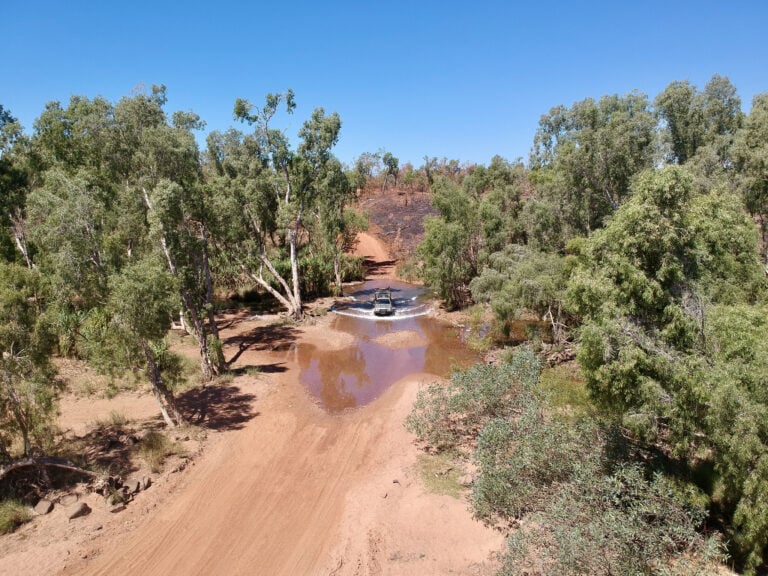 Explore
ExploreExploring the Savannah Way, Qld-NT
A series of highways, roads and tracks that span the north of Australia, from Cairns in the east to Broome in the west
-
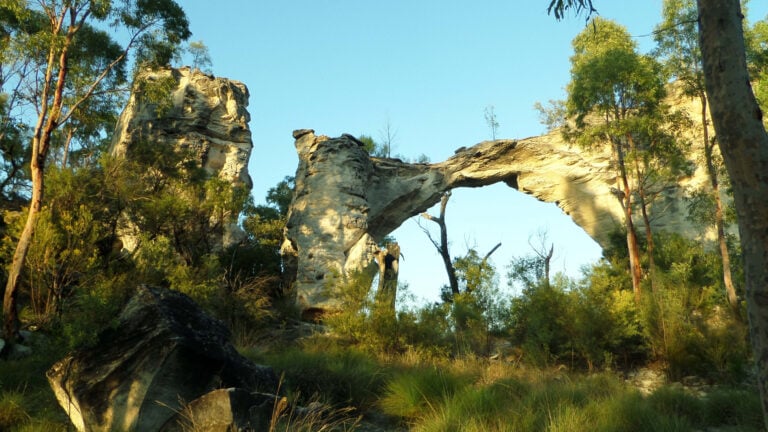 Explore
ExploreKenniff Country tour: Tracking our last bushrangers
While the Kenniff Brothers mightn't have the notoriety of the Kelly Gang, the Kenniff Country tour is still a fabulous adventure
-
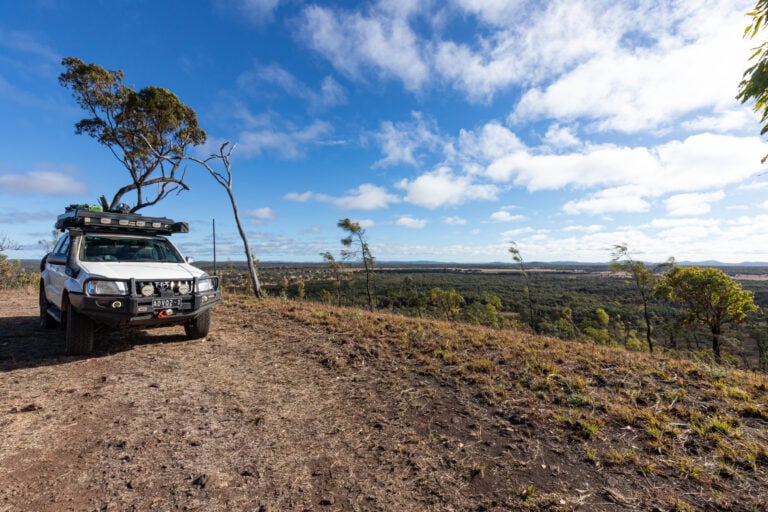 Explore QLD
Explore QLD4x4 adventure to Blackbraes National Park
A cracking national park that most people have never heard of

